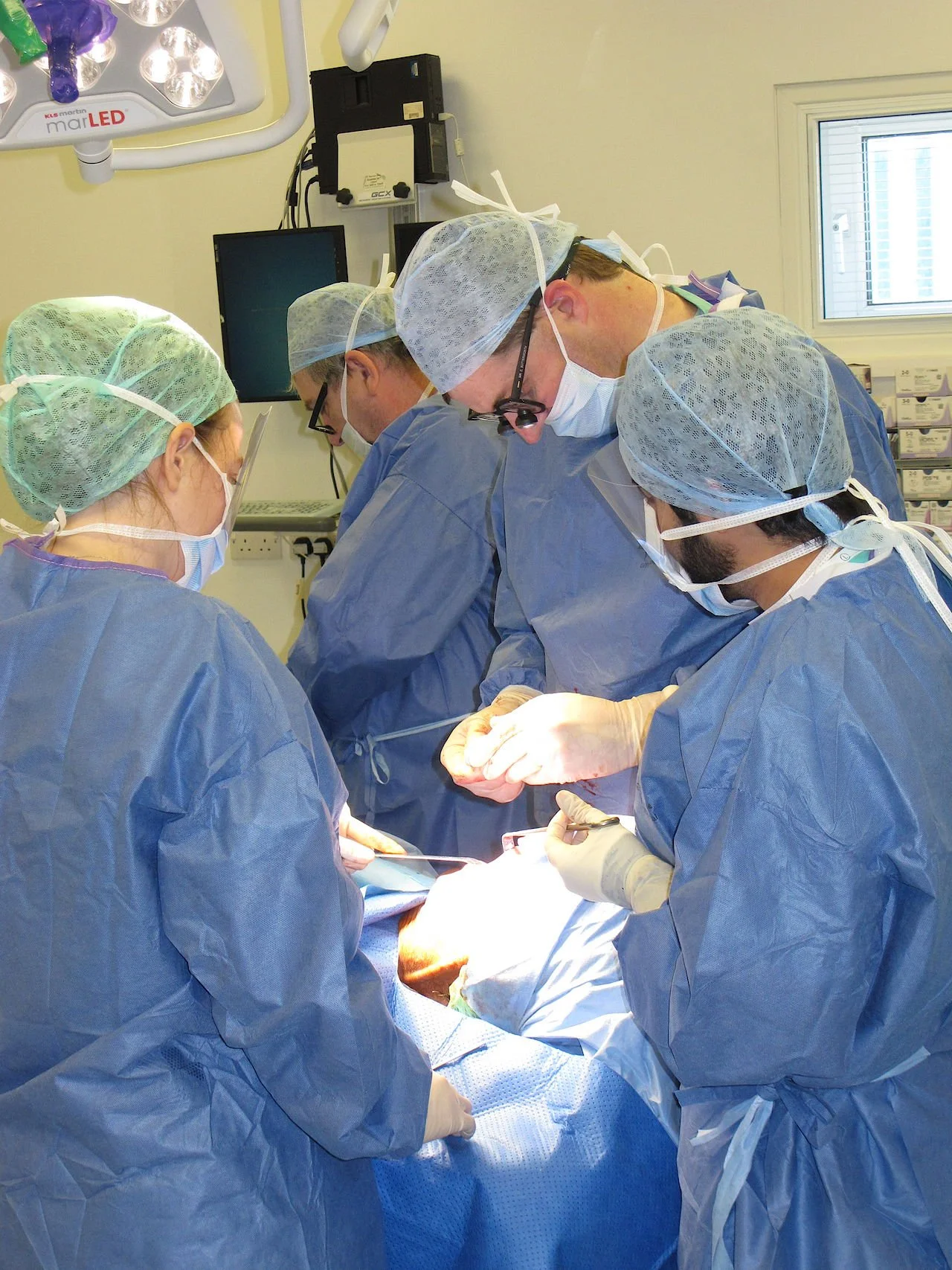
Dental Implants
Professor Chris Butterworth
BDS(Hons), MPhil, FDS, FDS (Rest) RCS (Eng), FDS RCS Edin (ad-hominem).
Consultant in Maxillofacial Prosthodontics
Chris Butterworth is a leading Maxillofacial Prosthodontist based at University Hospital Aintree, one of the largest Head & Neck Cancer centres in Europe. Since his appointment back in 2003, he has built a reputation for innovative care in the field of oral & facial rehabilitation. Chris has been in post since 2003 as the Consultant Maxillofacial Prosthodontist based between the Regional Maxillofacial Unit at University Hospital Aintree and the Liverpool University Dental Hospital.
He is the lead clinician for dental implant treatment at the Dental Hospital and also leads the prosthetic rehabilitation service in Merseyside for the oral & facial rehabilitation of head and neck cancer patients. He has extensive experience in the prosthetic planning, surgical placement and restoration of osseointegrated dental implants and has pioneered the placement of zygomatic implants in Merseyside.
Chris has an international reputation in Maxillofacial Prosthodontics and was the youngest national president of the British Society of Prosthodontics in 2011/12.
He is interested in the use of computerized dental implant planning techniques for complex cases, the use of zygomatic implants, surgical tailoring of intra-oral free flaps and in quality of life outcomes following osseointegrated implant treatment. He is actively involved in head & neck cancer research and is co-investigator on a number of clinical trials. He is actively involved in the training of future specialists and is the Associate Postgraduate dental dean for NHSE - North West Office.
Chris is a GDC Registered Specialist in Restorative Dentistry, Prosthodontics, Periodontics & Endodontics
-
A dental implant is used to replace the roots of teeth that are missing.
It is a strong post made of biocompatible metals or ceramics that is inserted into the jawbone and acts as a base for fixing single crowns, multiple tooth bridges, or can be used as an anchor for a complete denture.
It is a long-lasting, natural-looking solution used to replace a missing tooth. Dental implants look, feel, and perform like natural teeth, helping patients smile confidently and maintain healthy oral function.
-
A dental implant may be needed if you are missing one or more teeth due to decay, injury, or periodontal disease. Beyond restoring your smile, implants help preserve the strength and shape of your jawbone. When a tooth is lost, the surrounding bone begins to deteriorate, which can lead to sagging facial features and further dental complications. Implants actively prevent this bone loss by mimicking natural tooth roots and stimulating the jawbone.
Dental implants are widely considered the most aesthetically pleasing tooth-replacement option available. Each implant is topped with a custom-crafted crown designed to match the colour, shape, and size of your natural teeth, creating a seamless and beautiful smile. Because implants are anchored securely in the bone, they don’t shift, click, or feel bulky like some dentures or bridges. Their stability, durability, and natural appearance make them a top choice for patients who want their replacement teeth to look flawless and feel completely natural. With dental implants, you can enjoy exceptional comfort, confidence, and long-term oral health. -
Treatment time can take 3 to 4 months from implant placement until you have the final prosthetic restoration. The procedure involves;
1. Consultation and examination
Your dentist will assess your dental and medical history and explain your different treatment options.
2. Clinical assessment and planning
To be a suitable candidate for implant treatment you need enough healthy bone to anchor an implant. X-rays and sometimes a specialised CT scan may be used to show bone quality and quantity. If there is not enough bone, there are options to build up bone again.
3. Tooth extraction (if applicable)
4. Implant surgery
At this appointment the implant(s) will be inserted into the bone. Your dentist will make a small incision into the gum before the implant is placed. This is usually done under local anaesthetic. Sedation can be arranged for patients who suffer with dental anxiety.
On top of the implant your dentist will place a healing cap. This helps to shape your gums during healing. You will have stitches to close the incision.
At this stage you will still have a visible tooth gap. Depending on where and how big the gap is, you can have either a temporary denture or bridge.
Now it will take time for the bone and soft tissues to properly heal around the implant. This can take up to 6 months, but is usually around 3 months.
5. Postoperative review and suture removal
Approximately two weeks after surgery you will return to your dentist who will check on the healing and remove any stitches.
6. Impression taking and prosthetic restoration production
When the implant has completely healed, it will be time to start the restorative step. At this appointment your dentist will take an impression of the implant and your mouth
7. Prosthetic restoration fitting
When the final crown, bridge or denture is ready, your dentist will fix it to the implant(s) and make the necessary adjustments to ensure your bite is comfortable, functional and it looks as planned. From now on you will be able to eat, smile and laugh naturally again.
-
There are several alternatives to dental implants, each with its own benefits and considerations depending on your oral health, budget, and treatment goals:
1. Dental Bridge
A dental bridge replaces a missing tooth by anchoring a false tooth to the adjacent natural teeth. This option can be effective and aesthetically pleasing, but it requires reshaping the supporting teeth and does not prevent bone loss in the area of the missing tooth.2. Partial Denture
A removable partial denture is used to replace one or several missing teeth. It clips onto surrounding teeth for support. While typically more affordable, partial dentures may feel less stable, can affect speech or chewing, and require daily removal and cleaning.3. Full Denture
For patients missing all teeth in an arch, full dentures are a non-surgical option. They rest on the gums and can restore appearance and basic function, but may shift or cause sore spots and do not prevent jawbone shrinkage over time.4. Resin-Bonded Bridge (Maryland Bridge)
This minimally invasive option uses a false tooth that is held in place by metal or porcelain “wings” bonded to the back of adjacent teeth. It preserves natural tooth structure but may not be as durable or suitable for areas exposed to heavy chewing forces.Each alternative has its own advantages, but dental implants generally offer the most stability, longevity, and natural look and feel. A dentist can help determine which option best fits your needs.
-
Dental implants are not usually available on the NHS, only offered to certain groups of patients; those requiring rehabilitation after head and neck cancer for instance. Implant therapy is mostly available privately. The costs of treatment will vary according to your individual needs, the number of missing teeth and the complexity of the treatment. Your dentist will be happy to discuss your clinical needs and offer you a quote on this basis.
Prices start at £3000

